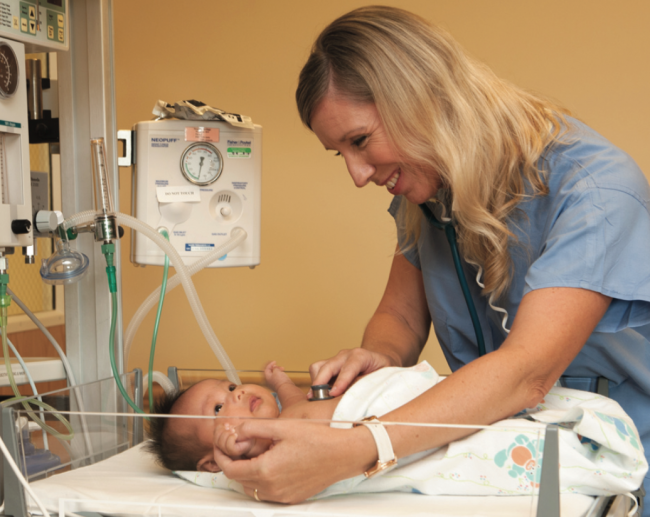Be Aware Of C-section Risks

Where did you receive your schooling and training?
I went to University of Hawaii’s John A. Burns School of Medicine and I also trained at UH for my ob-gyn residency.
How long have you been in practice?
I initially did five years in a group practice. I joined Kaiser Permanente in 2000, so I’ve been here now for about 15 years. I’m chief of Kaiser’s Koolau Medical Office and Windward Section chief of ob-gyn.
Did you specialize in a particular area of obstetrics-gynecology?
I’m a generalist, so I cover the entire field, which includes medical, surgical and preventative care for the female reproductive system and related disorders, as well as managing pregnancy, labor and delivery.
What got you interested in obstetrics and gynecology?
When you’re a medical student, you rotate through different specialties, which is good, because you figure out what interests you. I didn’t think that I would be interested in being an ob-gyn, until I rotated through the practice and did my very first delivery. I’ll never forget it, because as soon as the baby was born and I was standing there with the baby in my hands, I thought, “This is it. This is what I was born to do.” I was nearly in tears. The whole experience was so powerful.
How have the medical world’s views on Caesarean sections as a common birthing option changed over time?
Births were once done at home by midwives. People didn’t go to hospitals to have their babies. Back then, maternity morbidity rates from pregnancy were quite high, and the leading cause of death for a woman of child-bearing age was labor and delivery. Once hospital care became more prevalent and deliveries moved into hospitals, maternal morbidity rates started to decrease.
As technology developed, there was an invention called the fetal heart monitor. In the hospital, we started monitoring babies during labor and delivery. We realized that when the baby’s heart rate drops, that may be a sign of distress. We would then stop the attempt at a vaginal delivery in these cases and proceed with a C-section. As a result, the C-section rate grew. Then once you had a C-section, it was recommended that you have C-sections after that.
As time went on, we did more research and realized C-sections actually involve a lot of risks, more so than having a vaginal delivery. If you attempt to have a vaginal delivery after a C-section, it can be a relatively low-risk option compared to having another C-section. We began offering vaginal births after Caesarean sections, and we started to see C-section rates decline. We’re always trying to balance these risks and benefits for babies and their mothers.

Certified Nurse Midwife Bonny Hinz listening to Olivia Rosales’ heartbeat
NATHALIE WALKER PHOTOS
What risks do C-sections present?
These days most people think of C-sections as a minor procedure, but it’s actually a major abdominal procedure. There is an increased risk of infection and bleeding. In some cases, the bleeding can lead to the need for a hysterectomy. You also can get scar tissue from the surgery. If you require anesthesia for the C-section, there are risks with that. If you’ve had a prior C-section, with future pregnancies the scar tissue could cause the placenta to attach to the uterus in a potentially dangerous way. Definitely, if we can avoid a C-section, that is best.
When are C-sections warranted?
C-sections are valuable in certain cases, such as when the baby is in distress. If the baby is not “presenting” well, say, if the hands come out first, C-section is the way to go. If you’re having more than one baby at the same time (twins, triplets), a C-section may be recommended depending on the babies’ positions, how many there are, and if there are any other complications. C-section may be recommended for certain infections or prior surgical histories. The last consideration is if the mother’s labor is not progressing well or if the baby is too large.
So, vaginal delivery is the way to go, but with option of a C-section if needed?
At Kaiser Permanente, we do collaborative care with our nurse-midwives, who are certified nurse practitioners that also have completed midwifery school, so that they can provide pre-natal care as well as labor and delivery care. We wanted to give our patients the best experience in labor, so we brought midwives into the practice about six years ago.
Since then, we’ve seen such a great turnaround in how satisfied our new moms are with their delivery experience, because the nurse-midwives are great at coaching them on how to push and breathe. They have them labor in different positions and suggest different techniques that can greatly improve their comfort. It’s made a world of difference having them here.
After bringing in our nurse-mid-wives, we found that our C-section rate went down as well. We became even more mindful about letting the labor progress at its own pace, including trying different positions for labor and pushing. Their patience and understanding of labor and delivery have not only made the experience of our new moms better, but safer.
Do you actively educate women about keeping the C-section rate down?
We do. Even while they’re in labor, we say, “You’re not progressing, but we can give it more time because the baby looks OK.” In the old days, after two hours with no change, we’d do a C-section. But we now know from experience that it’s OK for a laboring woman to take her time.
Is there any truth to the belief that if you’ve had a C-section, it’s not safe to have a vaginal delivery with future pregnancies?
That’s an old wives’ tale. Depending on what type of C-section you’ve had before, it’s perfectly safe to have a vaginal delivery. We usually look at the specific situation, and the doctor or nurse midwife can counsel the mom on whether or not that would be a safe option for her.
It depends on, not just the current pregnancy, but also the previous history: Why was the first C-section done? Let’s say the C-section was done because the baby’s heart rate dropped and the baby went into distress. With the new pregnancy, it’s more than likely you’re going to be able to have a successful vaginal delivery.
Anything else you’d like to mention?
We really want to work with the community to balance the desire for home births with the safety net provided by delivering at a birth center. We heard women out there say, “We want to deliver with midwives.” By bringing midwives into the system, we feel we offer the best of both worlds, because now patients can have that great delivery experience that’s comfortable for them, while in a safe environment, just in case they need the extra care.
For more information, call 432-8550, or visit kpfamilybirthcenter.com.





